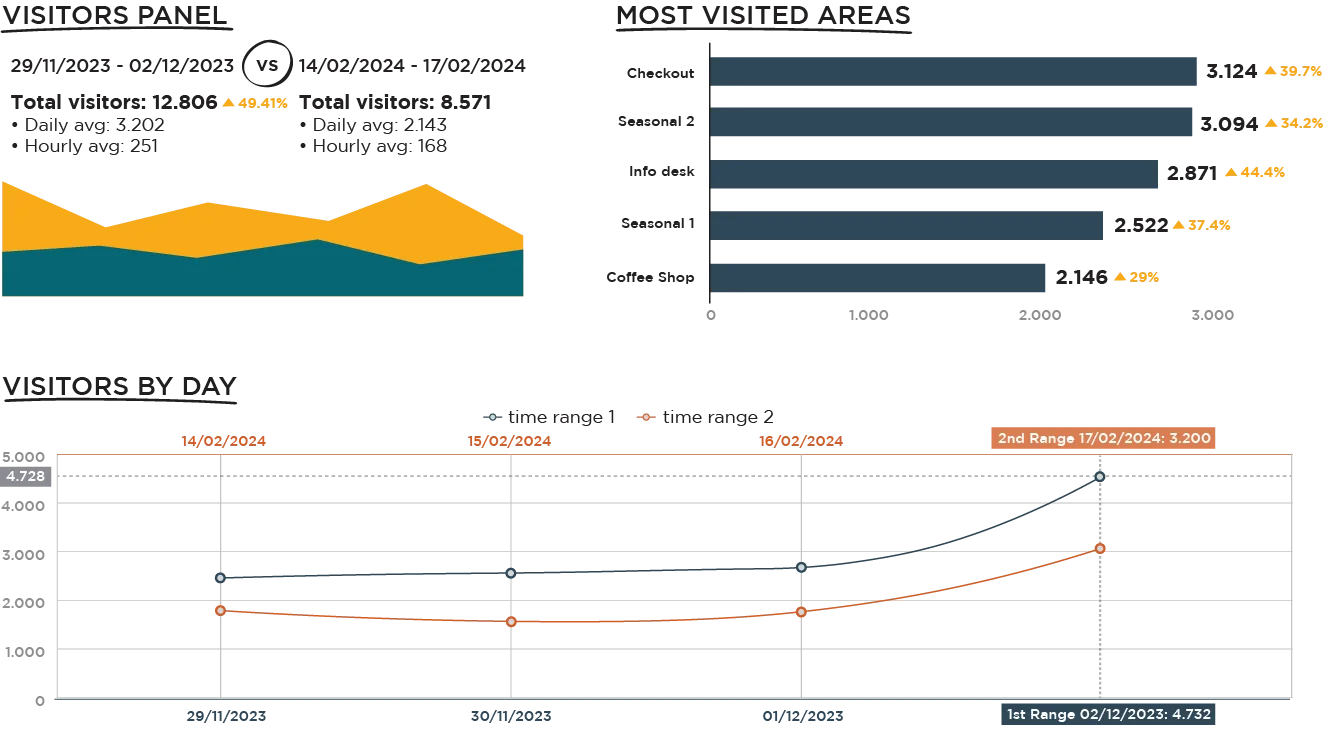
Marketing Manager
How Data-Driven Layout Optimization Drives Sales in Retail Stores
Store layout can make or break your sales. According to McKinsey & Company, optimizing store layouts can boost sales by up to 15%. It’s more than just a matter of aesthetics - layout directly influences how customers navigate your store, increasing product visibility and encouraging purchases. With data analytics now in the mix, retailers can use real-time insights to refine layouts, driving higher profits and delivering a better shopping experience. Let’s dive into how data-driven layout optimaization can transform your retail space.
The Critical Role of Store Layout in Retailing
Store layout is the backbone of any retail strategy, significantly influencing how customers engage with your products. A well-thought-out layout enhances the shopping experience, encouraging customers to stay longer, discover more items, and ultimately make more purchases. Each element—aisles, shelves, and displays—works together to create a path that subtly directs consumer behavior.
The core objectives of a store layout are to maximize space efficiency and increase sales per square foot. By strategically arranging products, retailers can highlight high-margin items, promote seasonal goods, and encourage impulse buys. An optimized layout not only simplifies the shopping process for customers but also supports smoother store operations, ultimately boosting profitability. Layout affects everything from customer flow to operational efficiency—and, most importantly, sales.
Key Influencers in Data-Driven Store Layout Design
Designing an effective store layout requires careful consideration of various factors, particularly how data-driven insights can enhance decision-making. Key influencers in layout decisions include:
1. Space Availability and Customer Flow Analytics
Space availability is critical in optimizing a store layout. Understanding customer flow through people counting and visitor flow analytics provides invaluable insights. These tools allow retailers to identify movement patterns, high-traffic areas, and bottlenecks. Such data empowers informed decisions on product placements, ensuring every square foot enhances customer engagement.
2. Understanding Customer Demographics
Customer demographics significantly impact layout decisions. By analyzing data on customer profiles—age, preferences, and shopping behaviors—retailers can tailor their layouts to specific needs. If analytics reveal a particular demographic frequents the store, the layout can be adjusted to highlight relevant products, creating a more personalized shopping experience.
3. Brand Identity and Store Concept
The layout should reflect the brand’s identity and concept, influencing customer perceptions. Utilizing visitor flow analytics helps retailers understand customer interactions with various store elements. This insight allows for strategic layout adjustments that align with the brand image while enhancing the shopping experience.
4. Strategic Planning for High-Traffic Zones and Cross-Merchandising
Identifying high-traffic zones is essential for maximizing sales opportunities. Data-driven insights reveal which areas attract the most visitors, allowing retailers to position high-margin items and promotional displays effectively. Additionally, customer flow data can identify cross-merchandising opportunities, placing related products together to encourage additional purchases. This strategic planning boosts sales and creates a cohesive shopping experience.
By focusing on these influencers and leveraging visitor flow analytics, retailers can design layouts that effectively enhance customer experiences, optimize product visibility, and drive sales.
Solutions for Effective Store Layout Optimization
To address the challenges of optimizing store layouts and harness data-driven insights, retailers can implement several strategies and tools. One such innovative solution is Ariadne, a cutting-edge analytics platform designed to enhance visitor flow and optimize store layouts.
Utilizing Ariadne for Enhanced Insights
Ariadne provides comprehensive visitor flow analytics, enabling retailers to track customer movement patterns in real time. By employing advanced people-counting technology, the platform generates detailed heat maps and flow diagrams illustrating shopper navigation. This data empowers retailers to make informed layout decisions based on actual customer behavior rather than assumptions.
Key Features of Ariadne

- Real-Time Analytics: Offers insights into visitor flow, helping retailers identify peak shopping times and adjust staffing and inventory accordingly.
- Heat Mapping: Highlights high-traffic areas, allowing retailers to strategically place high-margin products and promotional displays.
- Performance Metrics: Provides key performance indicators (KPIs) related to customer engagement, dwell time, and conversion rates.
- Customizable Reports: Generates actionable insights tailored to specific store needs.
Case Studies Demonstrating Impact
Ariadne's effectiveness is illustrated through case studies such as Weko and a famous furniture retailer from Sweden. In Weko’s store, implementing Ariadne's analytics led to a 30% increase in customer engagement by optimizing product placements based on heat map data. Similarly, furniture retailer utilized Ariadne’s insights to redesign their showroom layout, resulting in a 25% increase in sales in high-traffic areas within just three months. These success stories highlight how data-driven solutions can significantly enhance retail performance.

The Future of Retail Layouts: Data-Driven Optimization
As the retail landscape continues to evolve, the importance of data-driven optimization in store layouts is increasingly clear. Retailers harnessing the power of data analytics will enhance customer experiences and drive operational efficiency and profitability.
Leveraging Advanced Analytics for Layout Decisions
Integrating advanced analytics into retail strategies is reshaping layout design. Retailers can now collect and analyze vast amounts of data related to customer behavior, foot traffic, and purchasing trends. This data enables precise layout adjustments catering to changing consumer preferences and shopping habits, ensuring competitiveness.
AI and Predictive Analytics Transforming Retail
Artificial intelligence (AI) is pivotal in the future of retail layout optimization. With predictive analytics, AI helps retailers anticipate customer needs based on historical data and current trends. For instance, AI algorithms can analyze shopping patterns to recommend optimal product placements and identify high-traffic areas.
Personalized Shopping Experiences Through Data
The future of retail layouts also focuses on personalization. Analyzing individual shopping behaviors allows retailers to create tailored shopping experiences that resonate with specific customer segments. Visitor flow data can guide retailers in rearranging layouts to highlight products appealing to targeted demographics.
Sustainability and Space Efficiency in Store Design
As sustainability becomes a consumer priority, data-driven layouts can contribute to eco-friendly practices. Optimizing space usage not only improves sales but also minimizes waste and reduces environmental impact. Retailers can analyze layout efficiencies to ensure sustainable materials and energy-efficient designs, aligning store concepts with consumer values.
Continuous Improvement Through Real-Time Insights
The future of retail layouts will emphasize continuous improvement. Real-time analytics will enable retailers to monitor customer flow and sales performance, allowing agile layout adjustments in response to trends and shopper behaviors. This adaptability ensures retailers can meet customer needs while optimizing operations.
Data-driven optimization is not just a trend; it’s the future of retail layouts. Retailers leveraging analytics, AI, and customer insights will create dynamic and engaging shopping environments. By embracing these innovative approaches, retailers can enhance customer experiences, drive sales, and remain competitive in an ever-changing retail landscape. How will you leverage data to optimize your store layout?